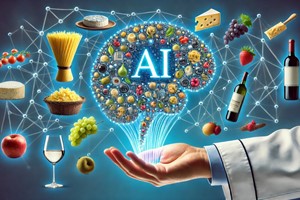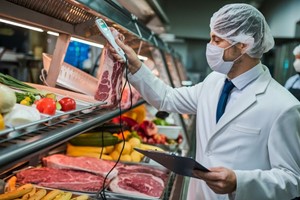Generative AI is poised to revolutionize the food service industry, offering innovative solutions for menu planning, customer experience personalization, and consumer behavior insights. Here are six key ways AI is making an impact:
- Shaping Menu Mix Strategy Chefs and restaurateurs can now refine their menus and optimize their offerings with the help of AI. This technology assists in generating creative recipe ideas and preparation methods tailored to specific ingredients and cuisines. AI can modify existing recipes to offer new and improved versions, such as those designed to minimize food waste. Additionally, AI can facilitate product comparisons and create alternative dishes, including vegan, more nutritional, allergen-free, or sustainable options. Through sustainability modeling, AI can perform complex evaluations of different products or dishes based on parameters like carbon footprint, water use, and food miles, providing recommendations to enhance sustainability without compromising flavor.
- Enhancing Food Choices and On-Site Experiences through Verbal Prompts In the future, consumers will likely use generative AI apps or tools via voice commands on their handheld devices. These tools will assist in understanding menu items, especially unfamiliar ingredients, and shaping dining experiences. AI can act as a personal assistant, helping users determine whether they might enjoy a particular dish based on their previous queries and prompts. Similar to using Siri on an iPhone, consumers will interact with AI models to enhance their dining experiences.
- Visualizing New Menu Items Using Generative Image AI Generative image creation is expected to become a staple for content creation, allowing rapid visualization of ideas. While basic generative image skills can be acquired by many professionals, transforming a rough draft into a final product still requires specialized design expertise. This technology will be used for everything from initial protoconcepting to visual exploration of concepts and visualizing entire product lines from launch to second and third generations.
- Personalizing Offers in Quick Service Restaurants (QSR) and Drive-Thrus AI is reshaping the QSR landscape through the integration of loyalty programs and limited-time offers (LTOs). Mattson's ProtoThink LTO™ leverages AI for novel LTO creation. By processing historical ordering data, AI can provide personalized suggestions based on consumer preferences. AI can adjust menu offerings based on factors like current weather, previous orders, and health goals, providing a more tailored and engaging customer experience.
- Menu Planning for Events AI can be invaluable for event catering, especially when considering themed menus and dietary preferences. By inputting detailed prompts about the event theme and dietary restrictions, AI can suggest innovative and appropriate menu items. These suggestions serve as a starting point for chefs and event planners, ensuring that all dietary needs are met while maintaining creativity and relevance to the event's theme.
- Gaining Deep Insights into Consumer Behavior Product developers, food startups, and marketers can utilize AI to gain deep insights into consumer behavior. AI democratizes access to insights at a remarkably low cost. Mattson’s Deep Field IQ™ approach employs AI to identify consumer segments and create food-centric personas, providing deep behavioral insights. AI’s ability to tap into vast data sets offers more reliable and extensive information, revolutionizing qualitative research and decision-making processes.
In Summary, Generative AI is set to revolutionize the food service industry by enhancing menu planning, personalizing customer experiences, and providing deeper insights into consumer behaviors. This advancement necessitates a shift in how industry professionals approach their roles and interact with technology, paving the way for a more innovative and efficient future in food service.
Author: Steve Gundrum
https://www.foodinspirationmagazine.com/














